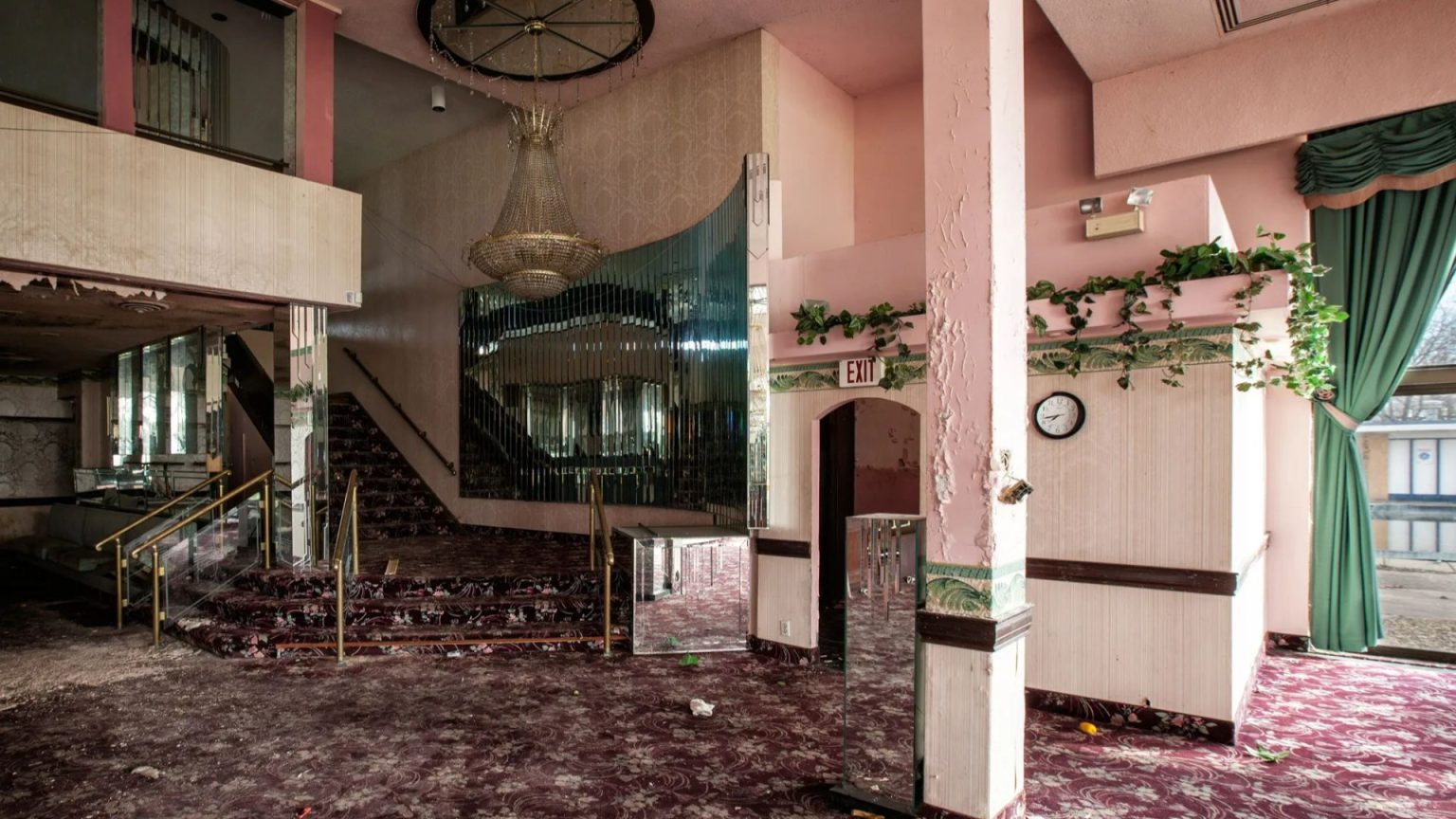The Fallside Hotel, once a glamorous destination in Niagara Falls, New York, stands as a poignant testament to the transient nature of prosperity and the inevitable decay that time inflicts upon all things. Originally built as a Treadway Inn in 1957, the hotel began its life as a symbol of the city’s burgeoning economy, offering luxurious accommodations, fine dining, and a prime location overlooking the famous falls. Its lavish features, including individually controlled air conditioning, modern furnishings, and televisions in every room, attracted a clientele that included politicians and celebrities, solidifying its status as a social and economic hub. Senator John F. Kennedy even delivered a speech in front of the hotel during his 1960 presidential campaign, underscoring its importance to the community.
Over the years, the hotel witnessed both periods of economic growth and decline, mirroring the fortunes of Niagara Falls itself. It underwent several name changes and ownership transitions, morphing from the Treadway Inn to the Parkway Inn, then to the Ramada Inn and the Days Inn Riverview, each iteration reflecting an attempt to adapt to the changing economic landscape. Despite these efforts, the hotel eventually succumbed to the pressures of a declining local economy, exacerbated by environmental issues and dwindling tourism. The Fallside Hotel and Conference Center, its final incarnation, failed to recapture the glamour of its past, and closed its doors in 2009, marking the beginning of its descent into abandonment.
The images captured by urban explorer Matthew Christopher offer a haunting glimpse into the hotel’s decaying grandeur. What was once a vibrant hub of activity is now a silent shell, filled with the remnants of a bygone era. The ornate chandeliers, mirrored piano, and patterned sofas stand as ghostly reminders of the hotel’s opulent past, now coated in a layer of dust and mold. The peeling wallpaper, moss-covered carpets, and water-damaged ceilings speak to the relentless march of time and the destructive power of neglect. Evidence of squatters and thieves further adds to the sense of desolation, underscoring the hotel’s vulnerability in its abandoned state.
Despite the pervasive decay, certain areas of the hotel, like the ballroom, remain remarkably preserved, offering a stark contrast to the ravaged guest rooms and corridors. These pockets of preserved elegance serve as a poignant reminder of the hotel’s former glory, highlighting the beauty that once existed within its walls. The juxtaposition of decay and preservation creates a powerful visual narrative, capturing the complex history of the Fallside and its enduring connection to the community.
Christopher’s photographs not only document the physical decay of the hotel, but also serve as a tribute to its historical significance. He recognizes the role the Fallside played in the lives of countless individuals, hosting graduations, honeymoons, business deals, and family vacations. His images capture the essence of these memories, preserving the spirit of the hotel even as its physical structure crumbles. Through his lens, the Fallside becomes more than just a decaying building; it transforms into a time capsule, preserving the memories and emotions associated with a place that once held a special place in the hearts of many.
The story of the Fallside Hotel is a reminder of the cyclical nature of progress and decay. It is a story of adaptation, resilience, and ultimately, surrender to the forces of time and circumstance. While the physical structure may be gone, demolished to make way for a new Doubletree by Hilton, the memories and the history of the Fallside live on, preserved in the photographs and the stories of those who experienced its grandeur. The eerie beauty of its decay serves as a poignant reminder of the transient nature of all things, and the importance of cherishing the moments and the places that hold meaning in our lives.




